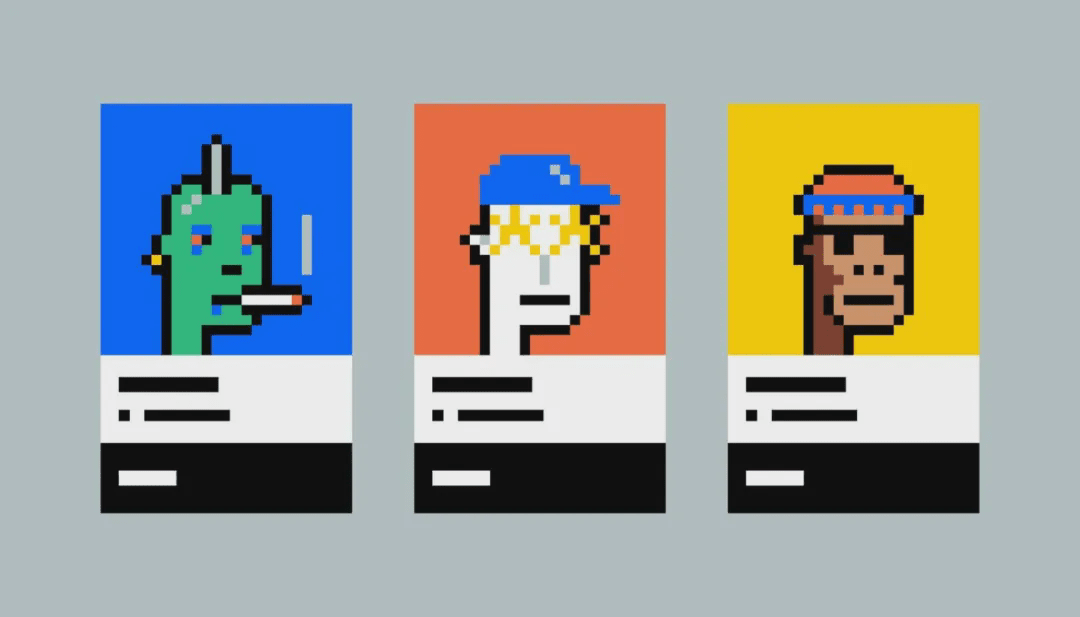
Despite Bitcoin reaching a new high in the first week of October, the third quarter of 2025 laid a perfect foundation for year-end development. Dapp has been affected by the downturn in the crypto market, but innovation has never stopped. In the past three months, we have witnessed the continuous rise of Dapp, with tokenization becoming a crucial pillar in the industry, driving the development of NFTs, and DeFi TVL reaching historic highs.
The average number of active wallets on Dapp is 18.7 million, down 22.4% from the previous quarter. Gaming has solidified its market dominance, increasing from 20.1% in Q2 to 25% in Q3, followed by NFTs (18.5%) and DeFi (17.9%).
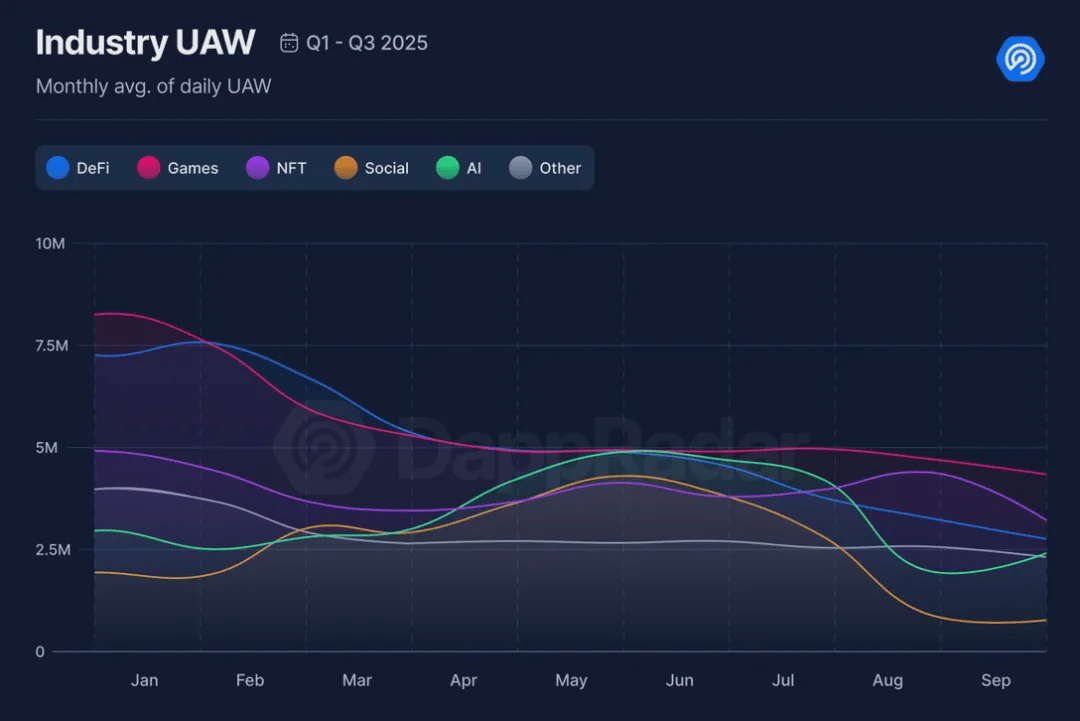
NFT transaction volume nearly doubled this quarter, reaching 1.58 billion USD, while NFT sales set a new quarterly record of 18.1 million.
In terms of market dominance, the market share of NFTs has increased, currently ranking second with 18.5%. Meanwhile, the gaming category still dominates the Dapp industry with a market share of 25%.
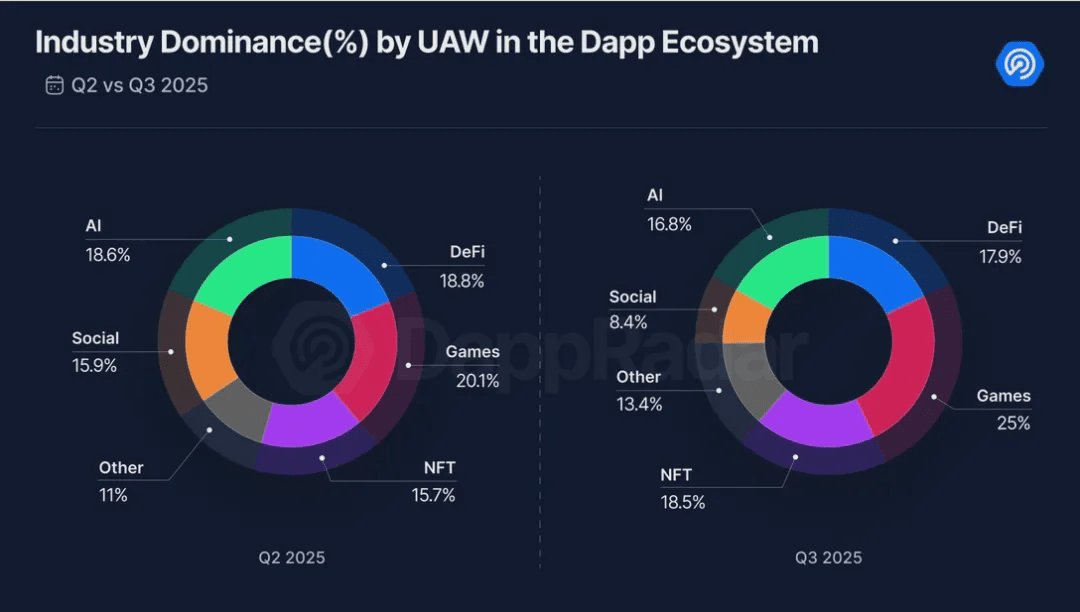
NFT sales reached a new high since 2022
Due to the lower trading prices of many NFTs today, the transaction volume has slightly decreased. However, the number of transactions in 2025 has increased, with the first quarter recording sales of 7 million NFTs and the second quarter reaching 12.5 million.
This upward trend continues; in the third quarter, the market recorded sales of over 18.1 million NFTs, generating 1.6 billion USD in transaction volume.
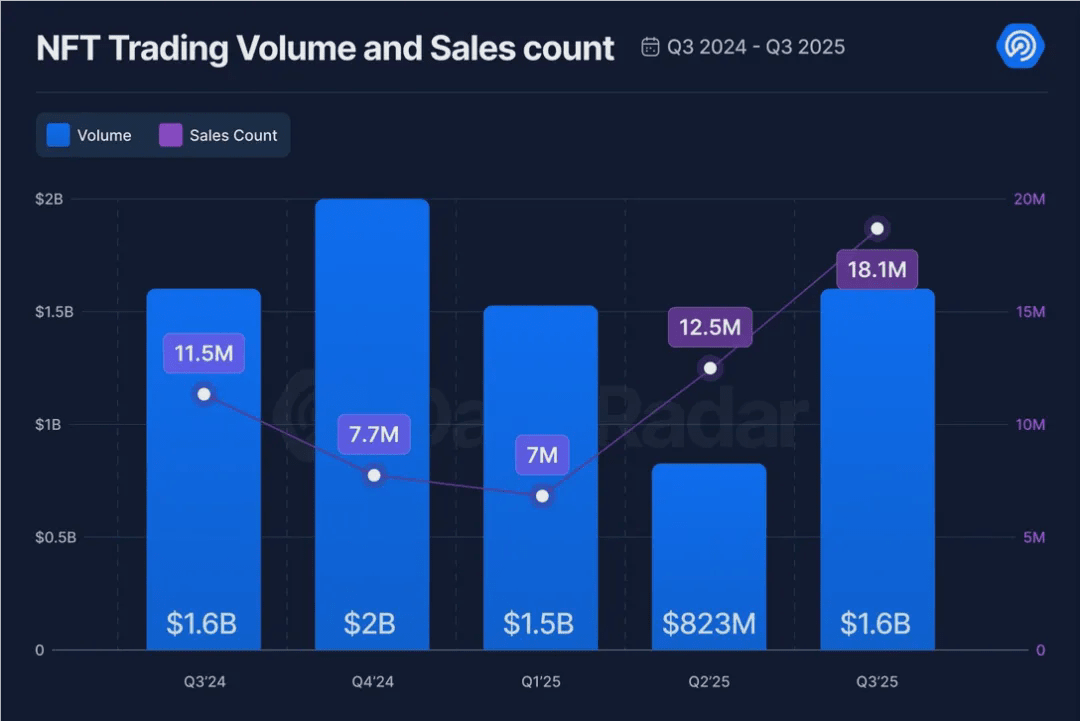
The increase in sales volume has not been reflected in actual applications. Despite the number of NFT traders reaching the highest monthly number in 12 months, the increase is minimal compared to sales volume.
In the first quarter of 2025, there were 1.66 million wallets trading NFTs, recording 7 million NFTs sold during the same period, which means an average of 4.2 NFTs traded per wallet. In Q3, 2.14 million wallets traded 18.1 million NFT assets, meaning an average of 8.4 NFTs traded per wallet.
Between the two quarters, sales increased by 158%, yet the number of wallets only grew by 28.6%, indicating strong support from existing participants rather than a massive influx of new users.
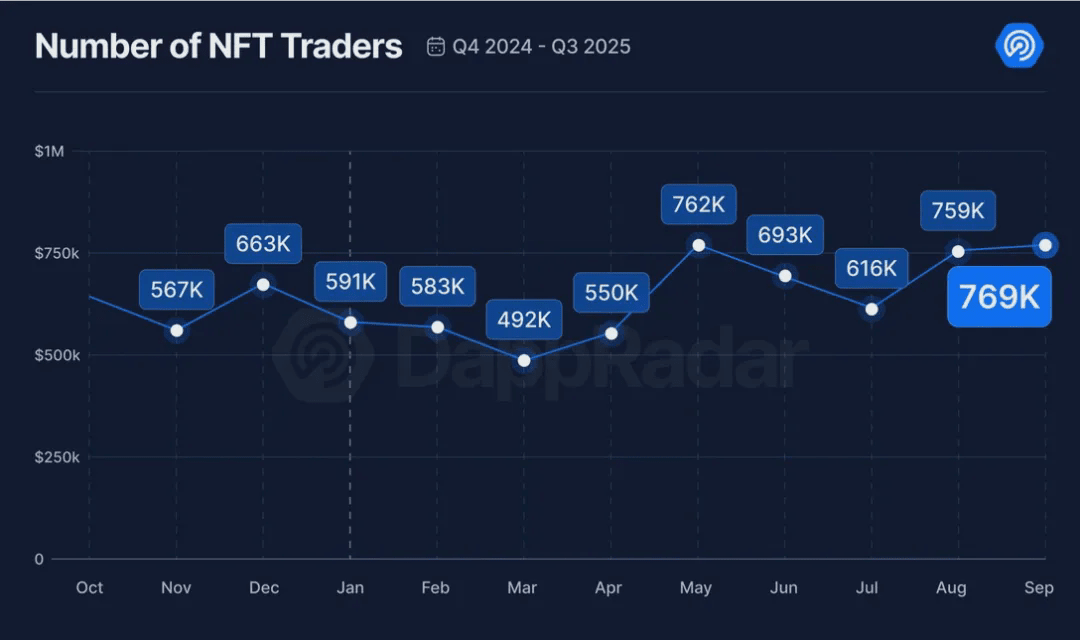
The only NFT category that saw a decline was gaming. In the past quarter, the transaction volume for gaming NFTs decreased by 17%, while the number sold dropped by 32%. In contrast, the transaction volume for sports NFTs grew by 337%, reaching 71 million USD, with the number sold increasing by 143% to 4.1 million.
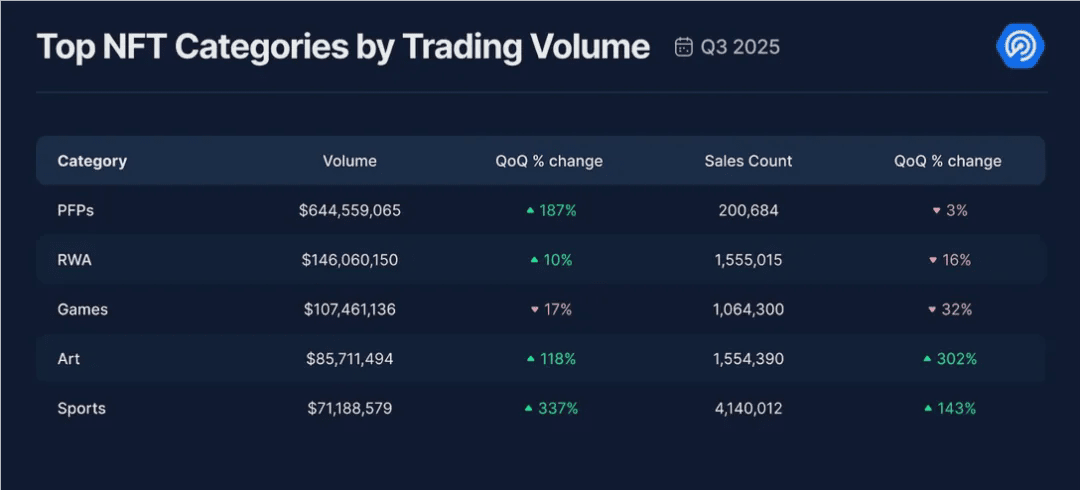
The surge in transaction volume is also attributed to developments such as OpenSea launching a campaign for its upcoming token while rewarding the most active traders on its platform, prompting users to trade low-value NFTs to meet daily standards. OpenSea successfully increased its sales volume by 29%, reaching 9.27 million assets.
Meanwhile, PFPs (Profile Picture NFTs) led by CryptoPunks, Moonbirds, BAYC, and Pudgy Penguins have gained attention, with quarterly transaction volume for PFPs increasing by 187% to 544 million USD.
While CryptoPunks remain the holy grail for NFT collectors, Pudgy Penguins is gradually evolving into an entertainment brand integrated with Web3, covering gaming and other forms of entertainment.
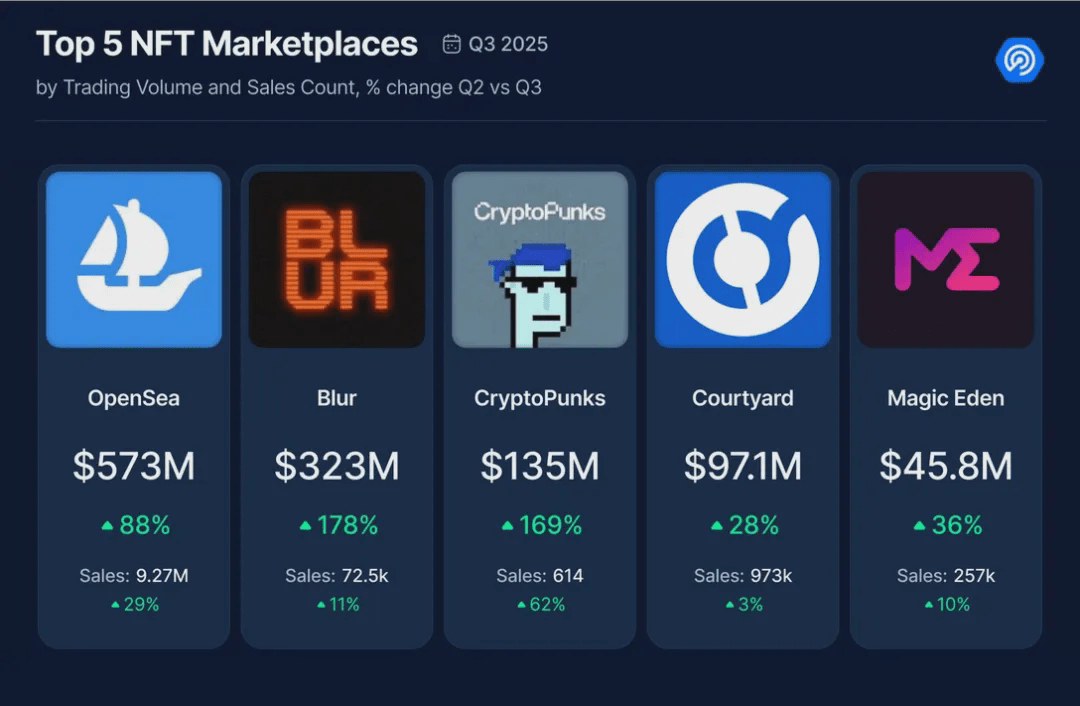
Yuga Labs, the company behind Bored Ape Yacht Club, sold part of its assets, focusing on BAYC, MAYC, and Otherside, bringing some new energy to the Bored Ape community. However, they still sold Moonbirds.
Moonbirds has become a standout project this quarter with 8,311 NFTs sold and a transaction volume of 88 million USD. The IP of Moonbirds is now owned by Orange Cap Games, which announced plans to introduce the BIRB token to Solana in the first week of October.
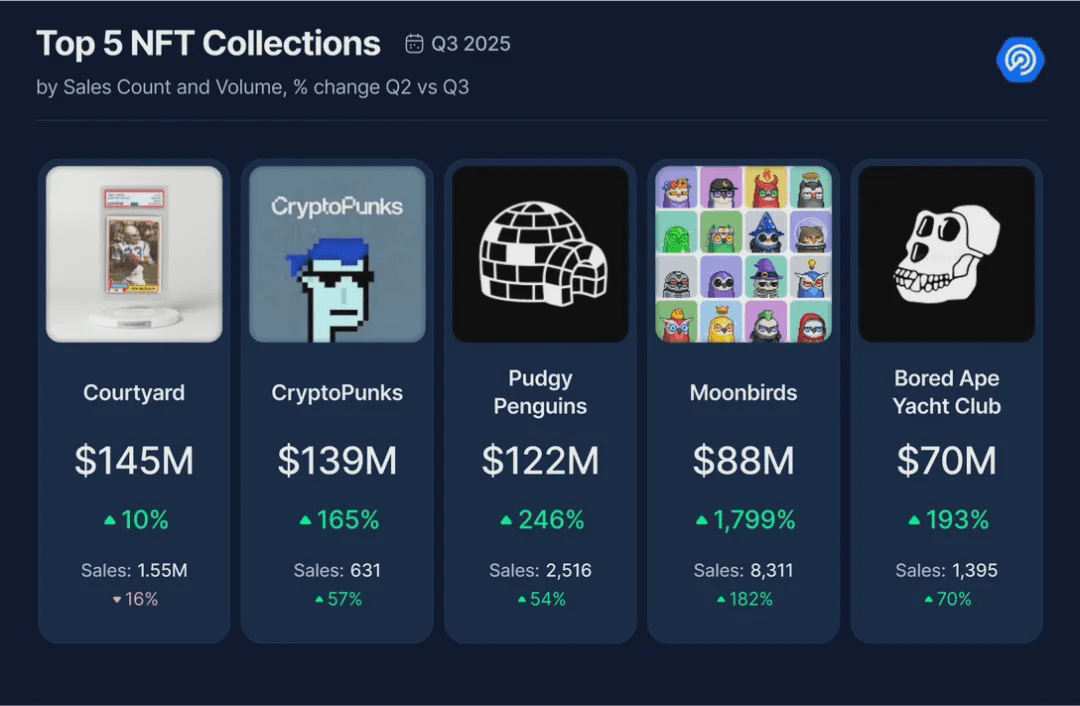
Leaving aside the data, real change is quietly happening. NFTs are no longer just JPEG images of monkeys; they are merging with the emerging RWA trend and DeFi.
The leading NFT series is Courtyard, which tokenizes physical collectible cards and sells them as NFTs on the blockchain. Each NFT on Courtyard is a tokenized physical trading card, such as a Pokémon card or baseball card. Users can trade digital versions of physical collectibles or redeem physical cards. In Q3 alone, Courtyard sold 1.55 million items, generating over 145 million USD in transaction volume.
In September, a new trend emerged: NFT micro-strategies. Token Works launched an automated protocol concept called PunkStrategy for buying and selling CryptoPunks assets. Users acquire PNKSTR tokens, and 10% of the transaction fees go into a fund pool. Once the protocol raises enough funds, it will purchase the cheapest CryptoPunk and then list it for sale at a price 20% higher than the purchase price.
When a CryptoPunk is sold on the open market, the protocol uses the obtained ETH to purchase PNKSTR from the market, and these tokens are subsequently destroyed, exiting circulation. Thus, PNKSTR has become a way to access CryptoPunks without having to purchase expensive NFTs.
NFTs are no longer just about collecting; these digital assets can represent ownership of physical assets and can also be part of automated DeFi protocols.
In summary, NFT market sales surged to 18.1 million, highlighting its evolving role, surpassing the collectibles category, and merging with DeFi and real-world assets, with the gaming sector still holding dominance.
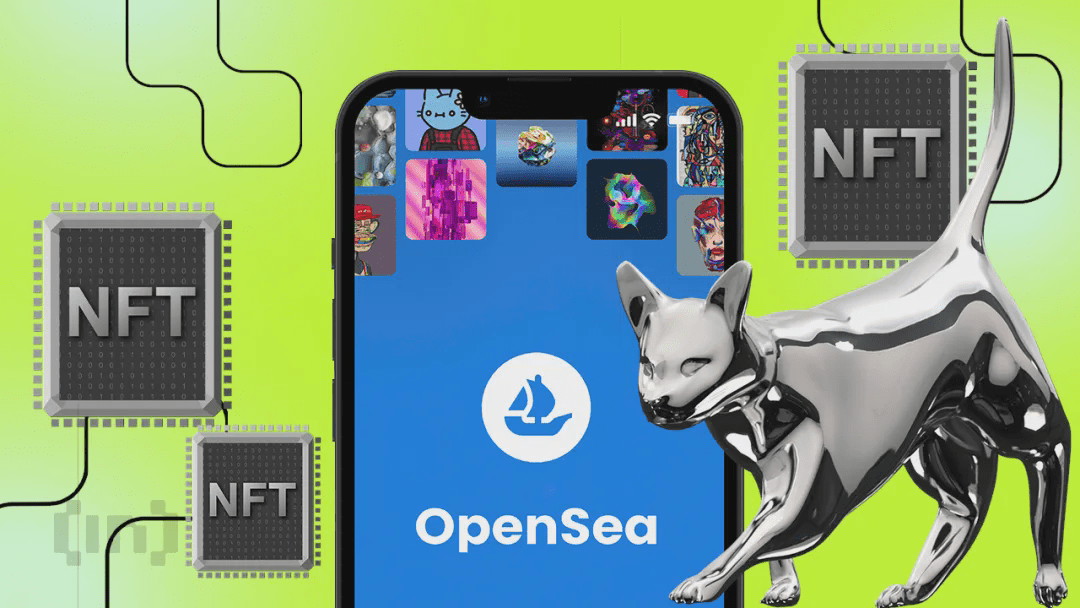
#CryptoPunks #Courtyard #NFTstrategy #Opensea空投
OpenSea content you care about
Browse | Create | Buy | Sell | Auction

Follow OpenSea on Binance Channel
Stay updated with the latest news


